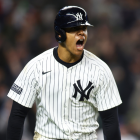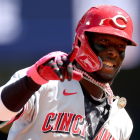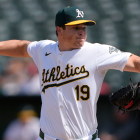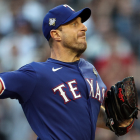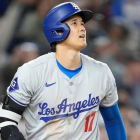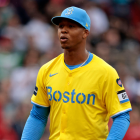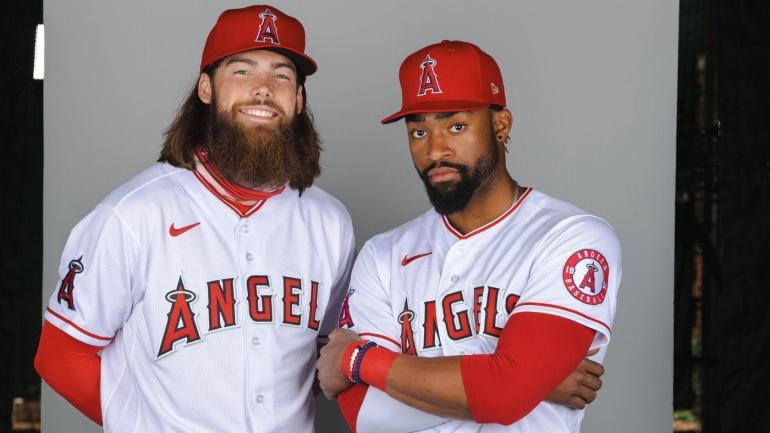
It wasn't long ago the Los Angeles Angels appeared to be set in the outfield. They had Mike Trout, of course, as well as promising youngsters Jo Adell and Brandon Marsh. Those three seemed more likely than not to form the Angels' starting outfield of the future. Flash forward to Tuesday, and the Angels optioned Adell to the minors in what serves as the latest reminder that even the best-laid plans can fall apart.
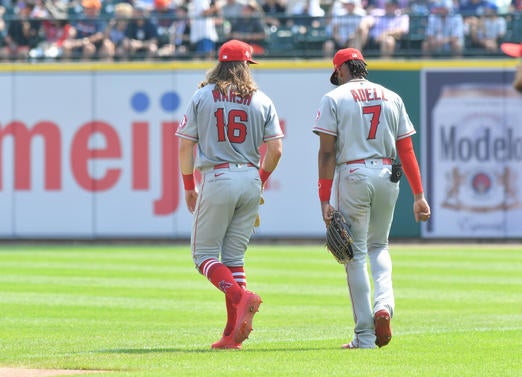
Adell, 23 years old, had a horrendous introduction to the majors during the pandemic-shortened 2020 campaign. He appeared in 38 games that season and amassed nearly three times as many strikeouts (55) as hits (20). He's played better in his 54 appearances since, but playing better isn't the same as playing well. To wit, he has a 91 OPS+ and more strikeouts than walks dating back to the start of 2021.
Adell has tinkered with his swing in an attempt to make more consistent and quality contact. It hasn't worked. Prior to his demotion, he had tallied a 24-to-1 strikeout-to-walk ratio fueled by a 36 percent K rate. Adell had shown off his strength by homering three times and notching four doubles, but his 62 percent contact rate ranked in the 5th percentile among hitters with 50 or more plate appearances.
Arguably the most concerning aspect of Adell's contact woes was how often he was overmatched by fastballs. There was a series in mid-April against the Houston Astros that saw him swing and miss 16 times over a two-game span. The Astros didn't approach him in a tricky manner; they just kept throwing him fastballs and he kept whiffing, to the extent that all 16 of those empty swings came against the heat.
Sure enough, no batter who has seen at least 100 fastballs this season has a higher whiff rate (48.3 percent) on them than Adell does. That's not a particularly promising statistic, but it speaks to why the Angels made the roster move. They clearly believe he could use some time out of the big-league spotlight to work on his swing, and it's hard to argue they're wrong in that respect. (It doesn't help Adell's case that he was prone to defensive gaffes -- he'd made three errors already, and that's without considering the mistakes and misplays that were not scored as errors.)
Adell's youth and strength are still points in his favor, and his topline production was only slightly below the league-average. Still, his weaknesses -- specifically as it relates to making steady contact -- make him a volatile player, and one whose future in Los Angeles is already being questioned by other front offices. (One scout quipped that he wasn't sure Adell would be with the Angels in six weeks, let alone six months.) It's unclear if or how Adell fits into the Angels' long-term plans; the truth is, they might not even know at this point.
Comparatively, Marsh's standing in L.A. feels more certain. He's off to a fine start this season, hitting .262/.329/.410 (118 OPS+) while being used in a platoon role (more than 75 percent of his plate appearances have come against right-handed pitchers). As a reminder, here's what CBS Sports wrote earlier this spring when naming Marsh as the Angels' top breakout candidate:
Brandon Marsh, OF: Let's keep this nice and simple. Six batters with at least 150 plate appearances launched a higher percentage of their batted balls in the 10-to-30 degrees window than Marsh did. Only one of those six, someone named Joey Votto, hit a higher percentage of their batted balls at 95 mph or higher. Assuming Marsh can get his strikeout rate in check (he punched out in 35 percent of his big-league plate appearances, well above his minor-league rates), we think he could be this year's Kyle Tucker .
Marsh has continued to hit the ball hard and on a good trajectory, to the extent that he ranks in the 83rd percentile or better in both categories. Regrettably, his contact woes haven't been vanquished to another realm. He's struck out in 31 percent of his plate appearances and has connected on around 67 percent of his swings. As with Adell, those swing-and-miss concerns make Marsh more volatile than is optimal. Even so, there are differences between Marsh and Adell; notably, that the former is 1) doing more damage when they put the ball in play and 2) more likely to accept a free pass.
Perhaps the Angels can take solace in the idea that Adell could follow Marsh's formula for success. It may not be how they dreamed things would go years ago, but it sure beats a nightmare.














